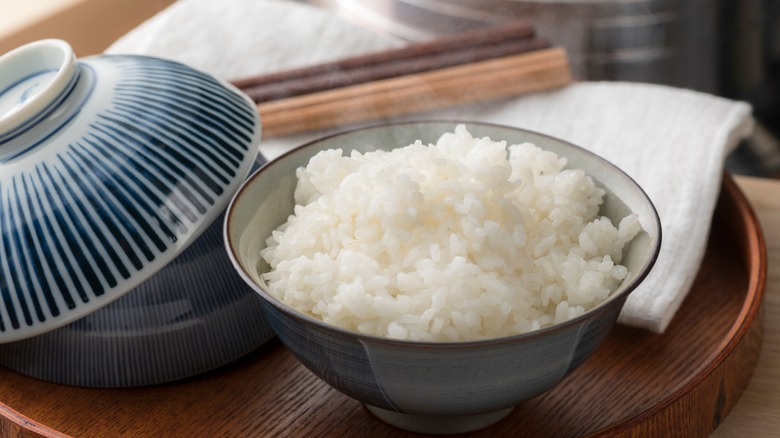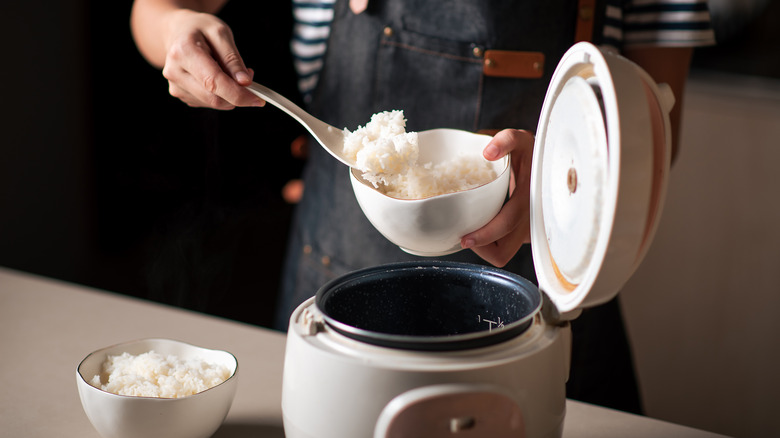The Last Minute Mistake That Causes Overcooked Rice
Imagine spending an entire afternoon cooking a delicious meal for dinner. As you lift the rice cooker's lid, your anticipation fizzles into disappointment. Instead of a pot of fluffy, distinct grains ready for serving, you discover mushy, overcooked rice that's noticeably denser at the bottom. Palm to your forehead, you realize what went wrong: You forgot to fluff the rice when it was finished cooking.
When cooking rice, this residual trapped heat continues to cook the rice even after the heat source or the rice cooker is off. When cooked rice isn't fluffed, the hot cooked grains are compacted, like smooshed sardines in a can, with no way for heat and steam to escape.
Our simple solution is to fluff cooked rice, as fluffing helps separate the grains and provides space for the steam to escape. Now you may think a fork is the best tool for the rice fluffing job, and many recommend it, but we suggest using an alternative: the rice paddle.
Fluffing rice is the essential final step in rice cooking
The humble rice paddle has many advantages: It effectively separates rice grains without squashing them while simultaneously preventing damage to the delicate inner lining of your rice cooker. Additionally, thanks to its larger surface area, the rice paddle is more efficient and less time-consuming than a fork for fluffing rice. Plus, when you're done fluffing the grains, you can use the paddle to serve and plate the rice in satisfying portions.
Though effective at separating grains, the sharp tines of a metal fork pose the risk of inadvertently scratching your rice cooker's inner lining, potentially leading to wear and tear over time, especially with non-stick coating. Of course, in cases where you're preparing rice on the stovetop in a saucepan or pot without fear of risking scratches and damage, using a fork for fluffing rice is fine. And as for a wooden spoon, you may want to stay away since this would most likely break the grains or turn them into mush.

